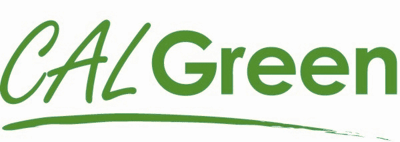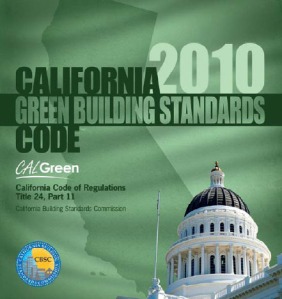A practical perspective by RCI, Inc. and SWRInstitute
Editor’s note
Just got permission to share this Position Paper on sustainability co-authored by representatives from two of the construction industry’s most knowledgeable organizations. These are the experts, and the people who in many cases, the experts consult. The membership of these two groups includes manufacturers, contractors, architects, forensic investigators and more. Their “official” descriptions follow at the paper’s conclusion. Given their high level of experience and expertise, I think their views on sustainability and “green” are must-read for everyone in the business. — Gary

Seven-story apartment complex 901 New Hampshire in Lawrence, Kan., goes up in Spring 2011 with a (tan) vapor permeable primary air & water barrier on Densglass structural walls for energy-efficiency and weatherproofing the building envelope. Click pic for story ~ photo by Stephen Falls
“Sustainable design seeks to reduce negative impacts on the environment, and the health and comfort of building occupants, thereby improving building performance. The basic objectives of sustainability are to reduce consumption of non-renewable resources, minimize waste, and create healthy, productive environments.” — U.S. Department of Energy
Sustainable Construction; What it means to you
A position paper by RCI, Inc. and The Sealant Waterproofing & Restoration Institute (SWR Institute)
Introduction
Over the past decade anyone involved in construction has had reason to question how their work product impacts the environment and the resources future generations will rely upon. Whether compelled to do so by regulators enforcing environmental responsibility, design professionals insisting on “sustainable” construction products, or owners mandating more energy efficient buildings, demand for sustainable construction has increased in an economy that has seen a sharp decline in more traditional building practices.
Today that demand has become a market force in its own right. A rapidly growing number of electronic and print publications now promote differing ways to achieve “sustainable design”, advertise increasingly efficient building systems, and promote a wide range of building materials derived from recycled or renewable resources. Additionally, many building owners have placed a disproportionate emphasis on obtaining accreditation status for their buildings versus emphasizing long-term performance. Too little emphasis, however, has been placed on durability of building systems, the need for proactive maintenance, and benefits of restoring existing buildings as means to achieve sustainability.
RCI, Inc. and SWRInstitute Perspective
To achieve sustainable construction, emphasis must be placed on design and construction of the building envelope systems.
In addition to new construction, we, the members of RCI, Inc., and SWRInstitute devote much of our expertise to the design, repair, maintenance and restoration of building envelopes. Buildings that we work on vary from those in design phase to ones that have survived generations. With experience with older buildings constructed of traditional materials, and newer buildings that incorporate sustainable building materials and energy efficient components, ours is a unique perspective on the truly sustainable nature of modern building envelopes.
Over the last two decades, RCI and SWRInstitute members have been witness to a flurry of premature building system failures that have required us to undertake significant demolition, investigation, re-design and repair of modern structures. When such extreme measures are required on recent buildings, the benefits promoted as part of that building’s original “sustainable” design” are negated. Our clients – the building owners – are justifiably frustrated. They should not have to endure considerable inconvenience and cost to bring their “new” building back into a serviceable condition.
These costly failures and performance shortcomings have led RCI, Inc. and SWRInstitute to conclude that the most important consideration in achieving beneficial sustainability is durability. A durable building (or building system) is one that can achieve its intended service life with only routine maintenance. Without durability, the benefits of sustainable construction quickly vanish. Building systems that are not durable require costly repairs. They will also require new materials and energy for their repairs, adversely impacting our environment.
Numerous RCI and SWRInstitute case studies make clear that the durability of complex building envelopes is often compromised by premature failure of a single, integral component. Many such “weak links” were incorporated by well-meaning design professionals as sustainable alternatives to more proven technology. Their failure starts a chain reaction that fuels progressive decay of entire assemblies.
Durability shortcomings stem from several factors including the following:
1. Inadequate Design: Unless a building system is designed properly, it will not achieve its anticipated service life. Proper design requires a thorough understanding of how that building system will function, how it will integrate with other building systems, and which component can be the weakest link. To avoid design failures, experience with traditional systems and of the in-service strengths and weaknesses of sustainable alternatives is essential.
2. Inadequate Workmanship/Construction: Without skilled workmanship and proper execution, a well-designed building system will not achieve its intended service life. RCI, Inc. and SWRInstitute’s collective experience indicates that use of specialized contractors, and proper quality control/quality assurance, will increase the likelihood of achieving more durable construction.
3. Material/System Shortcomings: Sustainable construction has created a demand for numerous sustainable materials and systems. However, short track records and/or inadequate product development of such new systems can lead to disappointing performance in the real world. Another frequent contributor to premature failure is use of sustainable materials in ways the manufacturer never intended.
4. Inadequate Maintenance: While a durable building system should be able to reach its expected service life without unanticipated repairs, no construction material or system can function indefinitely without periodic inspections and/or routine maintenance. Some performance and service life shortcomings stem from improper maintenance, or lack of maintenance altogether.
What Sustainability Should Mean to Building Owners
With the above in mind, it is RCI, Inc.’s and SWRInstitute’s collective position that building owners should exercise caution when embracing the sustainable construction movement. Although we acknowledge the need to protect our environment and agree that sustainable construction should be integrated into our industry, no building owner can truly benefit from a sustainable building if the building cannot reach its expected service life without the need for unanticipated repairs. To that end, adopting policies that encourage durability is a necessary step towards achieving sustainability.
One final factor that must not be overlooked is the inherent sustainability of preserving and restoring existing buildings. Too often structurally sound older buildings – viable structures that could be restored and retrofitted for future use – are demolished and replaced with new energy- efficient structures. Before such extreme measures are taken in the name of sustainability, consideration needs to be given to the embodied energy and environmental impact of the resultant construction debris, and the costs and resources consumed by new construction.
Final Thoughts
While the sustainability movement promises many good things, we encourage building owners to consider how greater emphasis on building durability – and restoration of existing buildings – impact their financial interests, and the environment.
Sustainable buildings must survive to provide a financial justification for their construction, and benefit the environment.
In the opinion of RCI, Inc. and SWRInstitute members, it is often more environmentally responsible (and financially prudent) to restore an existing building than to build a new one.
# # #
RCI is an international association of building envelope consultants. Their members specialize in design, investigation, repair and management of roofing, exterior wall, and waterproofing systems.
The Sealant Waterproofing & Restoration Institute (SWR Institute) is an international trade association. Their members are some of the most experienced and qualified contractors, manufacturers and design professionals in the industry.
Through their strategic alliance, these organizations have observed, analyzed and compiled opinions of many industry leaders regarding sustainability.

Built in 1904 and abandoned for the last few years, the Poehler Building in East Lawrence is getting a new life as apartments. Occupancy is set for July 2012. Click pic for story. Stephen Falls photo
Read Full Post »
 h of certifications and registrations that are relevant for the industry’s sustainable, resilient products crowd.
h of certifications and registrations that are relevant for the industry’s sustainable, resilient products crowd.







![LEED[1]](https://greenpiece1.files.wordpress.com/2011/08/leed1.jpg?w=500)






